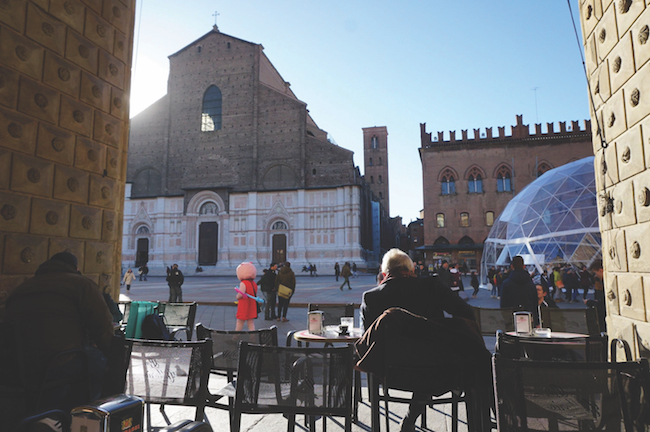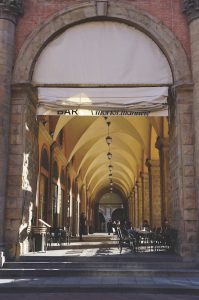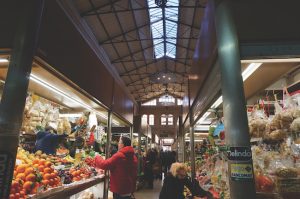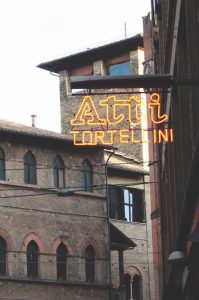Twenty years ago Rachael Martin arrived in Italy, exploring the country by rail and dreaming of rooms with a view. Twenty years, one Italian husband and two kids later, she still has the memories of those first voyages of discovery…
Photos by Rachael Martin

It started early one morning with a train, a train that wound its way down across the flat plains south of Milan, past factories and abandoned warehouses, through the suburbs and then out past the cascine lombarde, those large square Lombardy farmhouses amidst miles of flat agricultural land. I stayed in one a while back with my husband on a weekend away without the kids. The mountains, snow-covered still and marked out by the fierce blue morning sky, stood behind in the distance. They are skies that exist only in winter, skies that remind me why I love where I live. Inside there’s a young man who’s going to Salerno. Buongiorno signora, as he takes the seat next to me, a man that I imagine is going back home.
I’m on the Italo train to Bologna, on the line that links north to south, starting in Turin or Milan and going down through Bologna and Florence to Rome, Naples and further. I’ve been trying to remember if I’ve ever actually been to Bologna. I’ve driven past Bologna, I’ve been near Bologna, but I don’t have any clear recollection of actually being in Bologna. I think I’ve been but my husband thinks it was Ferrara, which makes me believe it could be somewhere between Bologna and Ferrara. What I do know is that it was on the way to a camping holiday on the Adriatic,
one of those weekends before we got married when we’d just take off with our two-person tent. Admittedly the tent was generally destined for the mountains, usually the Valtellina, and generally the middle of nowhere. There was a mountain plain there where it rained all night and a group of us stayed up till all hours detailing our futures. Then the future arrived and the camping trips stopped, or changed.
 Is there anything more civilised than cappuccino and brioche, I remember asking myself when I first came to Italy. It’s a total cliché, but the charm persists. Twenty years later, I’m sitting in Piazza Maggiore, in the heart of Bologna, having cappuccino and brioche once more. Whether I’ve been to Bologna before or not doesn’t matter. I’m here today, in the square, listening to classical music with the basilica in front of me.
Is there anything more civilised than cappuccino and brioche, I remember asking myself when I first came to Italy. It’s a total cliché, but the charm persists. Twenty years later, I’m sitting in Piazza Maggiore, in the heart of Bologna, having cappuccino and brioche once more. Whether I’ve been to Bologna before or not doesn’t matter. I’m here today, in the square, listening to classical music with the basilica in front of me.
Bologna goes by three names: La Dotta (the Learned) because it has one of the oldest universities in the western world; La Ghiotta (the Greedy) with its rich and hearty cuisine; and La Rossa (the Red) both politically, architecturally and also perhaps by way of its associations with red Ferraris and Ducatis.
Today I’m here for the ghiotta, and if you’re looking for food in Bologna, then it has to be tortellini, reputed to be the food of the gods. The legend goes back to the 14th-century wars between Bologna and Modena. According to Modena poet Alessandro Tassoni in 1624 and Tuscan engineer and journalist Giuseppe Ceri later, it all dates back to a 1325 battle. Venus, Bacchus and Mars took the side of the Modenese, and the next morning a naked Venus was discovered in Castelfranco by an innkeeper. Enchanted by the beauty of her belly button, he tried to re-create it with pasta. The result was the tortellino. I was told all this as I talked tortellini with a woman from the pastificio that day while she rolled out the sfoglia, the thin sheet of pasta. Yes, this is indeed the food of a goddess.
 Mercato delle Erbe is a fruit and veg market pretty much hidden by an unremarkable shopping centre where the recently opened eating establishments within give it a slightly urban feel. For lunch I go to Trattoria Anna Maria. It’s down Via Zamboni, and then a few more turnings. Via Zamboni is the university area. It reminds me of my own university days in 1990s Manchester. The same things are happening – students sitting at tables working, students sitting at tables chatting, students sitting at tables just passing the time of day. Yet the bar is defined by a different political time, a time that’s very much referenced in the writing on the walls.
Mercato delle Erbe is a fruit and veg market pretty much hidden by an unremarkable shopping centre where the recently opened eating establishments within give it a slightly urban feel. For lunch I go to Trattoria Anna Maria. It’s down Via Zamboni, and then a few more turnings. Via Zamboni is the university area. It reminds me of my own university days in 1990s Manchester. The same things are happening – students sitting at tables working, students sitting at tables chatting, students sitting at tables just passing the time of day. Yet the bar is defined by a different political time, a time that’s very much referenced in the writing on the walls.
Trattoria Anna Maria, however, you wouldn’t have found in 1990s Manchester. I walk in and it has that dining room feel, slightly old-fashioned, with red tablecloths under the usual white ones, and chairs that have been painted a pale green. The walls are covered in photographs. “They’re people who’ve eaten here over the years,” Lucia tells me. I’ve come here because I’ve heard the restaurant still has its own sfoglina, as a woman who prepares fresh pasta is known. “Everything is freshly made, including the bread,” says Lucia.
 I order a taste of the following: tortelloni (they’re the bigger ones) filled with ricotta and just the right hint of spinach; tortellini with pork mince and dressed in ragù; and one of my favourite dishes, tagliatelle with ragù. The taglietelle are light yet you can still taste the pasta, and the ragù has pork in it that always gives it a richness. They say that how a family made its ragù was an indication of wealth. All the best families only used beef, whereas pork was for the poorer families. I don’t mention I sometimes put sausage meat in mine – but then I’m not claiming it’s a true Bolognese ragù either.
I order a taste of the following: tortelloni (they’re the bigger ones) filled with ricotta and just the right hint of spinach; tortellini with pork mince and dressed in ragù; and one of my favourite dishes, tagliatelle with ragù. The taglietelle are light yet you can still taste the pasta, and the ragù has pork in it that always gives it a richness. They say that how a family made its ragù was an indication of wealth. All the best families only used beef, whereas pork was for the poorer families. I don’t mention I sometimes put sausage meat in mine – but then I’m not claiming it’s a true Bolognese ragù either.
“I’m so sorry that Signora Anna Maria isn’t here today,” Lucia tells me. Not that I really mind. It’s always good to have an excuse to go back.
Find more from Rachael’s Making Tracks series here.
